Results
-
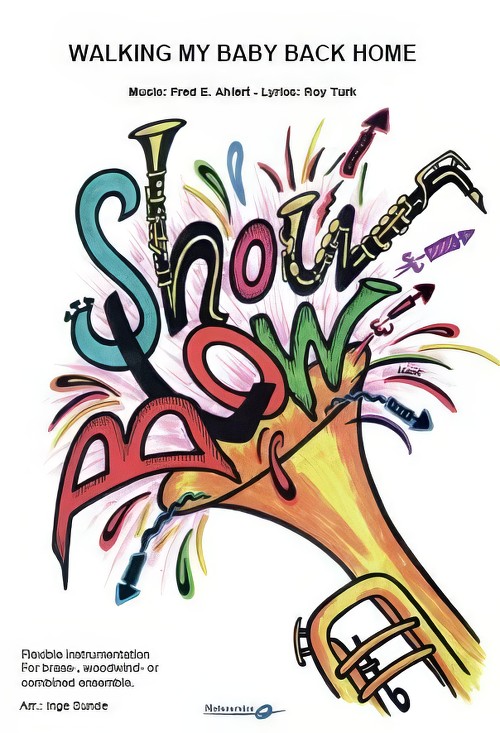 £66.95
£66.95Walking My Baby Back Home (Flexible Ensemble - Score and Parts) - Ahlert & Turk - Sunde, Inge
One of the most recent versions recorded of this is from 2008, with Natalie Cole singing a virtual duet with her father, Nat King Cole, who made the song a hit more than 50 years earlier, in 1952. The song was composed in 1930 by Roy Turk and Fred E. Ahlert, two famous songwriters in the big band, swing and jazz music of the time. The song was recorded by a large number of artists in the 30s, 40s and 50s, including Louis Armstrong, Bing Crosby, Ella Fitzgerald and Dean Martin.Flexible instrumentation (Flex 5 ShowBlow) makes it playable for small as well as larger ensembles.Duration: 2.45
Estimated dispatch 7-14 working days
-
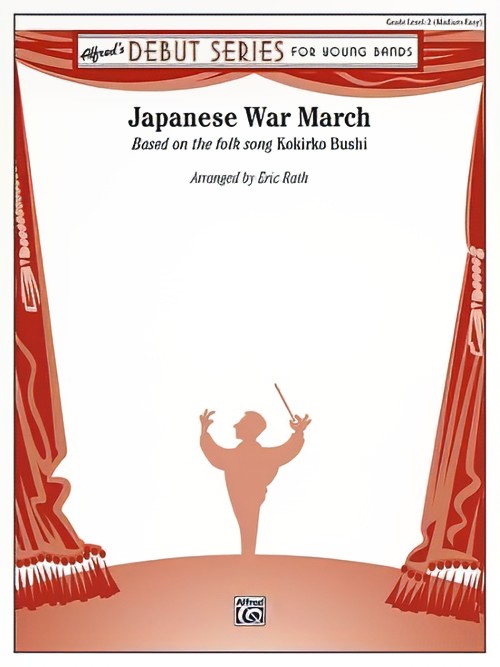 £53.95
£53.95Japanese War March (Concert Band - Score and Parts) - Rath, Eric
Based on the folk song, Kokirko Bushi. Kokiriko Bushi is long believed to be the oldest folk song in Japan. Normally, this song is presented in a serene setting, but has a new life as an up-tempo, war-like march. A vast array of authentic sounds is used, inspired by Japanese Noh Theater. Duration: 2:30
Estimated dispatch 7-14 working days
-
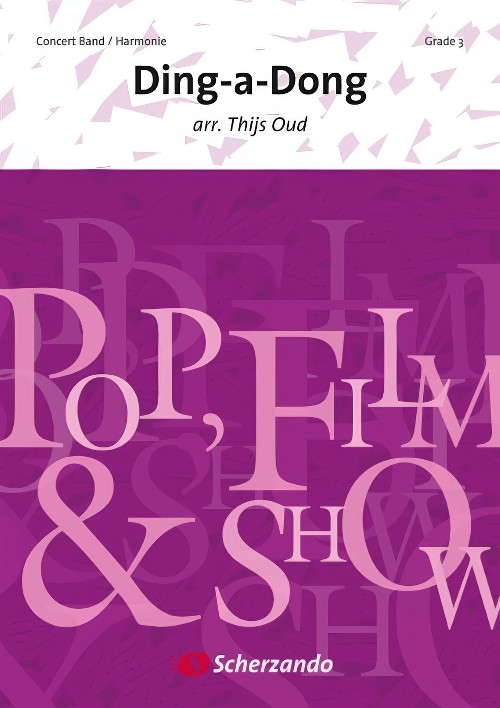 £76.99
£76.99Ding-a-Dong (Concert Band - Score and Parts) - Oud, Thijs
The group Teach-In, from the Netherlands, won the Eurovision Song Contest in 1975 with the song Ding-a-Dong. It was the fourth time that a Dutch entry had won the prestigious festival but since then no Dutch artist has even come near first place again. The original Ding-a-Dong was performed, in keeping with tradition, with the accompaniment of a large orchestra. This sparkling arrangement of the catchy song provides a cheerful note in every concert. The melody will certainly stay in the audience's memory long after the performance.Duration: 2:00
Estimated dispatch 7-14 working days
-
 £76.99
£76.99Volare Wind Band Set (Score & Parts)
In 1958, Domenico Modugno (1928-1994) song Nel blu dipinto di blu (or Volare) was the Italian entry at the Eurovision Song Contest. Modugno did not win the contest (he became third) but the song - a true sing-along - turned out to be a worldwide hit. In the course of decades, Volare has been translated into various languages, and performed by many artists of repute, like The Gipsy Kings, Dean Martin, Louis Armstrong, Petula Clark, and David Bowie. With this catchy arrangement, Lorenzo Bocci has given Volare a wonderfully fitting Concert Band sound. 0:03:45
Estimated dispatch 7-14 working days
-
 £71.50
£71.50Ryebuck Shearer - Barry E. Kopetz
Ryebuck Shearer is an Australian folk song full of rhythmic vitality. The song is about a sheep shearer who believes he is capable of shearing "a hundred and more" sheep daily. His song contains the carefree quality of a man who is no ones servant, and lives the hard but joyous life as one who works with his hands for his wages.
Estimated dispatch 7-14 working days
-
 £71.50
£71.50Ten Thousand Miles - Barry E. Kopetz
The folk song Ten Thousand Miles, also known as The Turtle Dove, captures the essence of the Aeolion mode in a warm, somber, yet flowing melodic line. Appearing in numerous versions, the song is a musical gem that has been passed down in various forms from one folk singer to another. The song may have originated as a 17th century broadside; though many well-known composers have used it as inspiration, this version for band is completely fresh in conception.
Estimated dispatch 7-14 working days
-
 £76.99
£76.99Ding-a-Dong
The group Teach-In, from the Netherlands, won the Eurovision Song Contest in 1975 with the song Ding-a-Dong. It was the fourth time that a Dutch entry had won the prestigious festival but since then no Dutch artist has even come near first place again. The original Ding-a-Dong was performed, in keeping with tradition, with the accompaniment of a large orchestra. This sparkling arrangement of the catchy song provides a cheerful note in every concert. The melody will certainly stay in the audience's memory long after the performance.
Estimated dispatch 7-14 working days
-
 £42.00
£42.00The Dark Crusader - Donald Josuweit
This is the perfect song for teaching 6/8 time. It is all very easy with eighth notes in groups of 3 only. No quarter/eighth rhythms, so it is easy to get the students to feel the triple meter. It is also a great song for getting the first clarinet players to play over the break. For the 1st half of the song, they play low notes. From low A, they press the register key and get the E in the staff, thus making it easy and fun to play the higher notes. It is an exciting work and one of NMP's best sellers. The first trumpet's highest note is C.
Estimated dispatch 12-14 working days
-
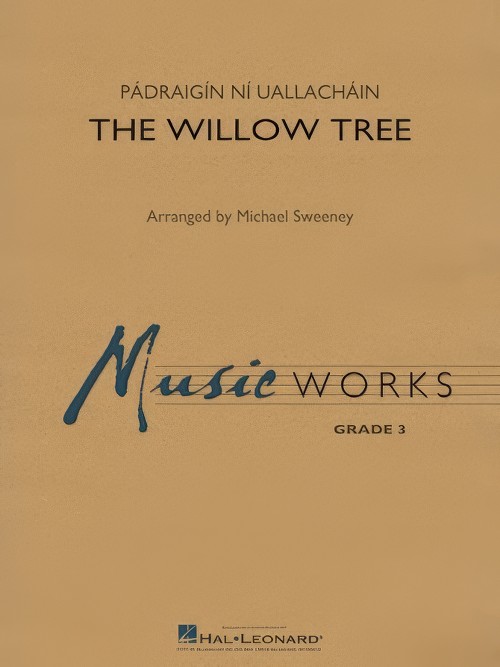 £60.99
£60.99The Willow Tree (Concert Band - Score and Parts) - Ni Uallachain, Padraigin - Sweeney, Michael
Although this haunting tune has the flavor and sentiment of a traditional Irish folk song, it was composed in 1995 by multifaceted artist P?draig?n N? Uallach?in. Her inspiration for the song was the idea that when we are happy or sad, the elements and the natural world are aligned with our feelings. From the wistful lyrics of the song; "Down by the river there's a tall willow tree, who weeps all night for you and me." This evocative setting for band follows this sentiment through peaks and valleys of sound and emotion. Duration: 3:15
Estimated dispatch 7-14 working days
-
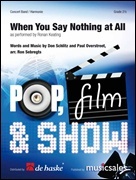 £84.99
£84.99WHEN YOU SAY NOTHING AT ALL (Easy Concert Band) - Sebregts, Ron
Ronan Keating's ballad version of this number, originally a country song dating back to 1988, made the song into a world-wide favourite and allowed Keating to step up from boy band heartthrob to serious artist. The song appeared on his first solo album, which reached the top 10 in various European countries. This is the version that Ron Sebregts has soulfully arranged for concert band. Duration: 3:45
Estimated dispatch 7-14 working days
